
Demand forecasting has gained increasing importance over the last few years. Unprecedented supply chain challenges have meant the risks and consequences of over- or understocking have been felt around the globe.
We met with five supply chain experts to discuss how crucial demand forecasting is for mitigating risk, and what businesses can do to improve forecast accuracy.
Listen to this podcast and subscribe to the series here.
Listen to all episodes and subscribe to the podcast here.
Meet the experts
- Nicki Hawkins - Cost Accountant & Head of Purchasing – Ribeye Boats, premium leisure boats in Dartmouth, Devon.
- Mark Houghton – CEO at Radical Cloud Solutions, our cloud solution specialist in Zimbabwe.
- Katherine Rowlatt – Head of Operations for AFP Services Ltd, business services for food and drinks brands based in Kettering.
- John Toon – Senior Manager, Tech Advisory Lead, Beever and Struthers - chartered accountants and business Advisors in Blackburn.
- James Trevelyan – Business Director at Circle One Surf Co. near Exeter.
Begin with high-level market data and work down to revenue
A common mistake when trying to predict demand is to rely solely on internal data.
It’s easy to get excited about a new product launch, especially when there’s historical evidence in the company to validate it. But just because something worked before doesn’t mean it’ll hold up in future market conditions.
Katherine Rowlatt of AFP Services warns, “You’ve got to be careful you're not being too aspirational when building your forecast. There must be an element of realism.”
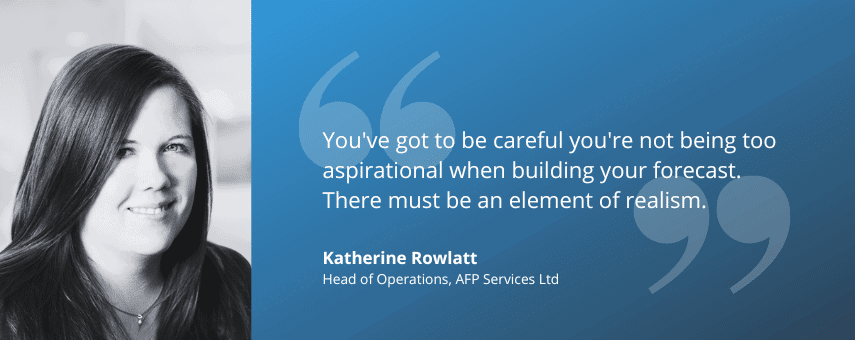
Our experts explain that best-practice demand planning begins with a top-down forecast.
That means analysing the market, global and local economics, your competition, and the latest industry trends before focusing on internal factors such as revenue and profit margins.
“Impact on disposable income and household budgets will inevitably [affect] the purchase of luxury goods for the regular household,” James Trevelyan of Circle One Surf Co. explains. “The guy that might be replacing or adding to his surfboard quiver on a yearly basis might choose to skip a year, for example.”
Being fully aware of market conditions can prevent costly errors in judgement. James says that understanding the market can be as simple as regular communication with your customers and suppliers.
“Our key accounts, they’re essentially our eyes and ears. You might pick up recurring themes that you can use to develop your offer.”
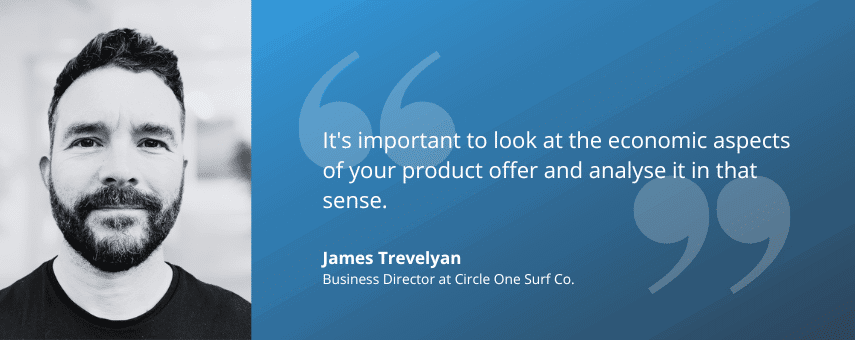
He adds that it’s important to consider the product category, and how your product fits into that market.
“Some categories are more price-elastic than others, so there's less scope in terms of price. It's important to look at the economic aspects of your product offer and to analyse it in that sense.”
“There are other categories which are more of a unique proposition, maybe [there’s] a smaller marketplace for those sorts of products. You can protect your margins better than you do with a more homogenous category.”
Protecting profit margins from ALC inflation
ALC (Average Landed Cost) is a crucial metric in demand forecasting and inventory valuation. John Toon of Beever and Struthers says that calculating your ALCs is non-negotiable.
“If you don't know [your average landed costs] you've got a real challenge to work out what kind of margin you're making, if any, on your products.”
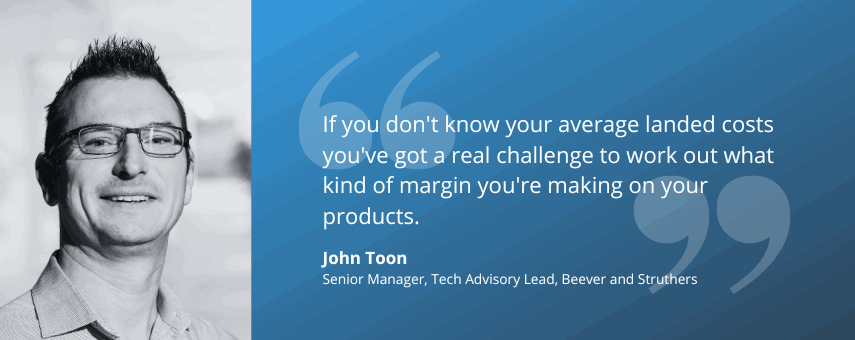
However, it isn’t quite as easy as relying on the standard formula: Total Stock Value / Total Stock Quantity.
Supply chain challenges – something most of us are all too familiar with these days – can have a major impact on ALC, as James explains in this very real example:
“We've seen significant pressure on our ALC since Covid. The main contributing factor to that was the cost of freight. We saw fivefold, sixfold, sevenfold cost increases bringing in containers from [Asia].”
“The consolation with that was all our main competitors sourced products from the same region, so we were all in the same boat.”
Speaking of boats, Nicki Hawkins of Ribeye Boats says inflated ALCs are a problem in the sailing industry as well.
“We might agree on a sale, on a yacht tender, which actually won't be built until next year. You've got to factor in what you know and what you expect to happen as well. Average Landed Cost (ALC) is one thing, but that's changing week by week.”
John Toon adds: “If freight cost is quadrupled between the time you've agreed on something with a customer and the time it lands, you've got a real challenge around how to account for that.”
Global economic conditions: Looking at the greater picture
Mark Houghton of Radical Cloud Solutions says that economics in the African region is not like the rest of the world, particularly in places like Zimbabwe, where inflation increases every day.
“We've found that clients are shielding their margins by looking at replacement value. They may have bought [a product] for $100. Due to inflationary causes, it's now $400 to replace, so selling it at $120 is not going to make sense. Your business isn't surviving with that model.”
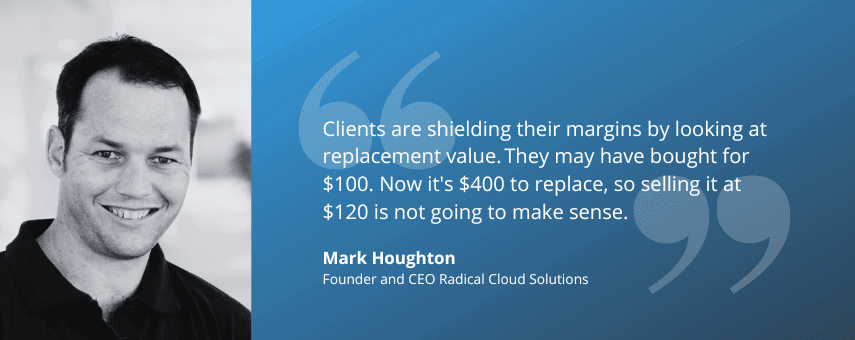
The South African economy slid over 13% since January. Mark says they’re now adjusting their pricing, but they’re not as experienced as other sectors.
“Other countries in the region are selling stock today that they bought last year when the economy was 15% stronger. Now they've got to go and replace it. And if their margin is 15%, they've made nothing out of it, but they don't see that for another month or two.”
John Toon explains that there are risk mitigation strategies you can put in place from a contractual point of view. Once again, it all comes back to open communication between customers and suppliers.
“[You] can say, ‘Look, the world's gone mad and it's costing us ten times more to bring things into the country, so we're going to have to come to an agreement otherwise there's going to be no more product.’”
He also lists forward contracting, minimising the cost of conversion, and alternative banking as ways of balancing inflation with profit.
“Using some of the neo banks or the fintechs really helps, particularly when your numbers tend to get quite large.”
Factoring in new product development and lifecycle management
NPD (New Product Development) success can be particularly tricky to forecast accurately.
Katherine weighs in with her take on NPD forecasting and product lifecycle management in the FMCG world. “You have to know what your minimum run size is going to be, and you've got to make sure that you've got the demand that that minimum run can cover within the shelf life of the product.”
“Most retailers will want 75% shelf life as a minimum. You really have to understand what that minimum run is going to be and, if you press go on the production, who is going to buy it.”
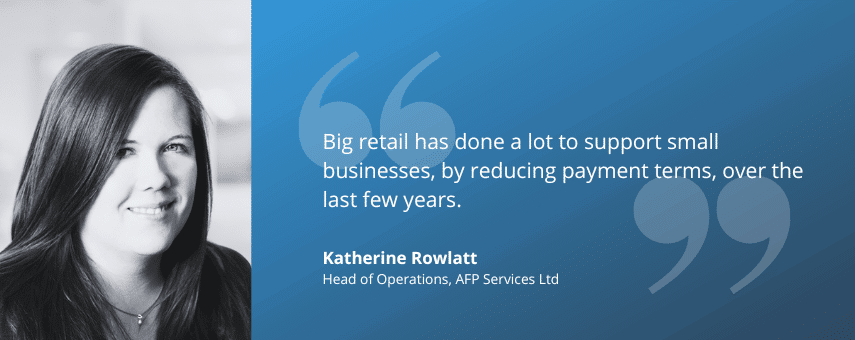
She says that a major mistake people make is leaping into production without confirming that the demand is there.
“Quite a lot of NPDs fail because there isn't that market for it when it's launched. It's a real shame. We see some really good products come and go.”
Mark Houghton supplies an import/export perspective on this topic. He offers this example of the consequences of launching a new product in a market that’s not ready for it:
“There are multiple factors to consider [when beginning an NPD], especially when you're moving products across borders. We've got two clients who brew beer: one local, and one across the border in South Africa. And the product in South Africa's done really well in the market there.”
“The assumption was that in the Zimbabwe market, it would do just as well, considering the per capita consumption is even higher. The product was brought in and didn't really take off, and now they're sitting with a product that's got a six-month shelf life at best. And the local brewers were experiencing much the same.
Data curiosity is the secret to successful demand forecasting
Top-down forecasting is an important strategy, as we’ve just learned from the advice and anecdotes of our experts. But what about the intangibles of demand forecasting? What mindset is needed to guarantee success?
Nicki Hawkins says it comes down to the ABC rule: Always Be Curious.
“You've got to keep challenging the numbers. Every time you think you've got a model, look at it again: is that actually what you thought it was going to be?”
“Become that inquisitive person that just wants to ask questions all the time. If you think to yourself, how many of those, how often, how fast… ask those questions and have other people in your team who are also inquisitive.”
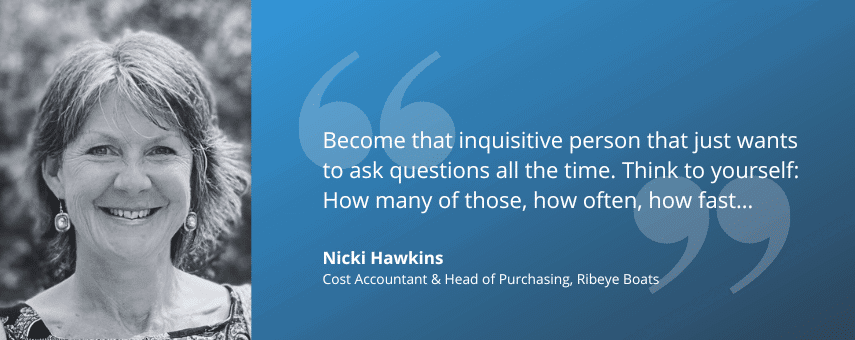
The sentiment is quite clear – don’t settle for surface-level findings; dig deeper.
“Keep looking for different ways to [analyse] what you are capturing. Take that step back. That's where your top-down influence comes from – being sure that you are capturing in the right way the information that matters.”
“You can be very busy looking at data and gaining information from it. But sometimes you've got to step back and ask, ‘What are we going to do with this? What's this going to tell us?’”
Fine-tuned modelling through stakeholder involvement
Nicki goes on to say that this curiosity initiative should extend to include key stakeholders as well.
“You can create forecast models. You can feed [forecast models] back to senior management and they might say, ‘No, that's not feasible.’ “
“They're the ones in the market. They know what's actually feasible in terms of what you can charge for something. Sometimes you've got to go back to the drawing board again and say, ‘That works, that doesn't work.’”
Of course, being curious only helps if the forecast models are based on reliable numbers.
As Nicki puts it: “You can only go back to those numbers and play with them if you've got good data.”
This echoes our experts’ earlier statements about the importance of understanding your ALCs and other key business metrics.
Don’t leave forecasting to the accountants
When it comes to numbers, business owners often like to leave everything up to their accountants or financial advisors – they’re the number-crunchers, after all.
But John leaves us with a final warning from an advisor’s perspective: Don't let the accountants take over.
“A lot of businesses think that finance and forecasting go hand in hand,” he explains. “Forecasting from the business is something that should be managed across multiple departments. The operations guys, the stock management team, the product development team, the marketing team… all of these [groups] should all be involved.”
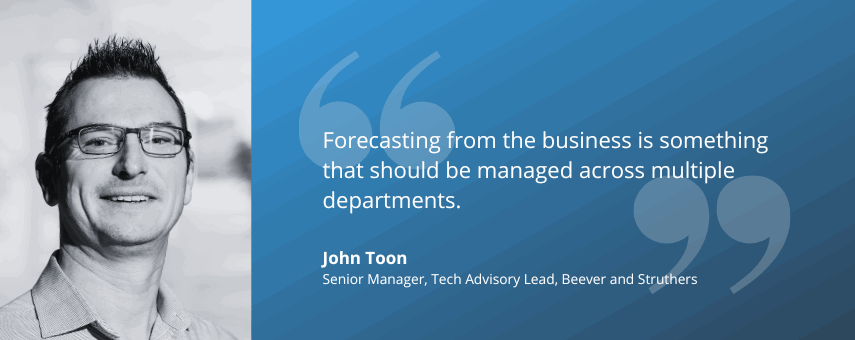
The reasoning is obvious. These departments consist of the people who care the most about a product’s success.
Not only does inaccurate forecasting mean their jobs might be on the line, but the myriad of perspectives also helps to paint an unbiased picture of the truth.
“I think too often it can be down to us boring accountants to go, ‘Well, we're going to sell 100,000 units next month and then it'll be 110,000 a month after. [But] we're just plucking figures from thin air and multiplying it by a number to get to something that looks good on our spreadsheet."

